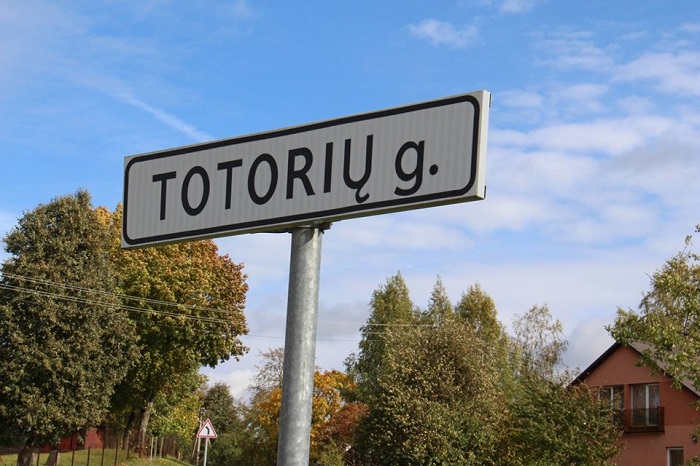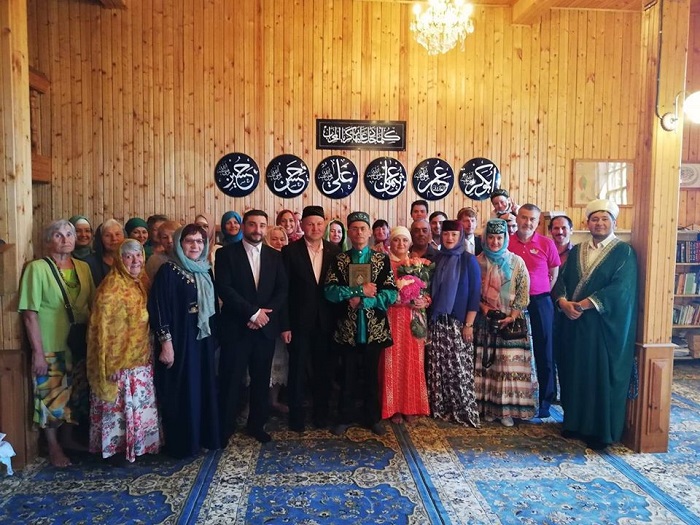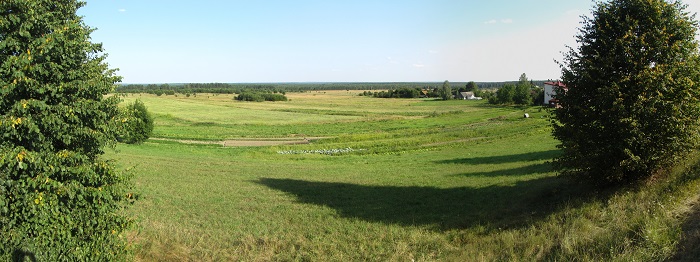Keturiasdešimt Totorių, also known by the English name Forty Tatars, is a very unique village that is part of the Pagiriai Eldership in the Vilnius District Municipality, within the southern part of the Republic of Lithuania.
What makes this village so special is that it is considered to be one of the oldest settlements which has a major population of Lithuanian Tatars, with their roots dating back to the Grand Duchy of Lithuania, which in fact was a European state that existed from the 13th century to 1795, when the territory was officially partitioned among the Russian Empire, the Kingdom of Prussia, and the Habsburg Empire of Austria.
Still, as the history of the Forty Tatars village dates back to the 15th century, as revealed through archival documents, it unveils a fascinating tale of cultural heritage, trade, and resilience. It is thought that the number of Tatar families that settled here more than 600 years ago was at the invitation of Vytautas the Great, one of the rulers of the Grand Duchy of Lithuania and nowadays the national hero of Lithuania.
As the story goes, in the year 1398, following a military expedition near the captivating shores of the Black Sea, Vytautas, accompanied by a multitude of valiant Muslim Crimean Tatars and a select group of enlightened Karaite Jews, returned to the Lithuanian domain.
Their purpose was to fortify and safeguard the territorial integrity of Lithuania, and as fate would have it, a mere twelve years later, the audacious Teutonic Knights brazenly engaged in conflict with Poland and Lithuania, only to find themselves facing a resolute alliance. Standing shoulder to shoulder with Vytautas, the indomitable Tatars, and Karaites fought gallantly in the epic Battle of Grunwald, an awe-inspiring clash between Warsaw and Gdansk.
It was a momentous occasion where the Crusaders were unequivocally vanquished, serving as a testament to the unwavering spirit and unity of the defenders. In recognition of their unwavering loyalty and steadfast support, Vytautas, a magnanimous leader, bestowed upon the Muslim warriors a gift beyond measure, and he granted them the land of their own, along with unparalleled religious freedom which was a truly remarkable gesture considering the times.
It was an era when both the Sephardic Jews and the venerable Moors, Europe’s oldest Muslim community, were facing expulsion from Spain. Thus, within the grand tapestry of history, the fortuitous arrival of the Tatars and Karaites in Lithuania and their valorous participation in the Battle of Grunwald stand as timeless symbols of harmonious coexistence and the just rewards bestowed upon those who stand together in the face of adversity.
Granted that initially this small village was known as Turkoman-kirk, meaning “forty,” or Kykrlar, meaning “plenitude”, but later it adopted the Slavic name Sorok Tatar, and there are several legends that are linked to the name of this interesting place. One of them is that the name was derived from the fact that one man had four wives and every wife gave birth to ten sons, thus the name Forty Tatars.
Interestingly enough, this was approved and granted by Vytautas. Throughout history, the village changed its name several times, depending on the empire that ruled the area, and the current name of Keturiasdešimt Totorių was returned in 1939 following the return of the Vilnius Region to Lithuania.
After everything, the inhabitants of Forty Tatars village played significant roles in the region’s socio-economic landscape, as they served as carriers, transporting goods for Vilnius merchants to distant cities like Poznan, Krakow, and even Crimea. Renowned for their fur and leather dressing skills, the Tatars from Forty Tatars village were sought after for the quality of their work, supplying the needs of the Grand Duchy of Lithuania’s army.
Furthermore, the village’s defensive function is evidenced by its historical role in protecting the surroundings of Vilnius, it provided mounted soldiers to the Grand Duchy of Lithuania’s army, showcasing its dedication to continuously safeguarding the region. Unfortunately, the village endured losses during attacks by both the Moscovites and Swedish followers, but it persevered, demonstrating remarkable resilience.
A notable aspect of Forty Tatars village is its religious significance, where it boasted a mosque, believed to have been built at the time when the people settled in the area. Throughout its history, the mosque underwent reconstruction, fire damage, and subsequent rebuilding, finally being fully restored and reopened in 1993.
Captivatingly, it stands as the only mosque in Lithuania without a mihrab, a niche indicating the direction of Mecca, further adding to its uniqueness and mesmerizing beauty.
Today the rich history of Keturiasdešimt Totorių village serves as a testament to the vibrant cultural tapestry of the region, symbolizing the enduring spirit of its inhabitants not just for their contributions to trade, craftsmanship, and the preservation of cultural heritage, but also the shown courage that was always given no questions asked.
Even though the Tatar community in the village is mixed, and as per the 2016 census some 120 Tatars are living in the village, this magnificent place is open for visitors to get a glimpse at the mosque, three historic Tatar cemeteries and amazing local community that is quite welcoming and willing to proudly show their longstanding heritage.


















